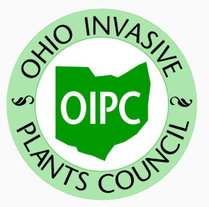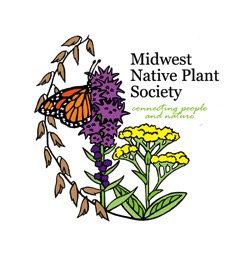
Field Notes
Native Plant Society of Northeastern Ohio
Moss Workshop at West Woods
27 October 2018
by Lisa K. Schlag
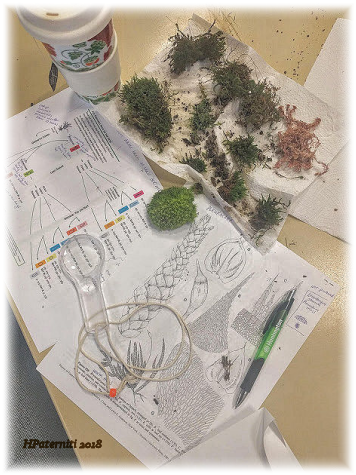
photograph courtesy of Heather Paterniti
Learning About Mosses
Thank you Janet Traub and James Toppin of the Ohio Moss and Lichen Association for helping further our understanding of nature by sharing your knowledge and time with program participants on Saturday, 27 October 2018 at West Woods nature center. Janet and Jim provided educational handouts and specimens that participants could take home for further study. The classroom session prepared us well for our field walk.
Ellen Brown-Armstrong's keen observation skills spotted something of interest on a boulder and with further inspection we learned it was grain-of-wheat moss, Diphyscium foliosum. Janet was delighted! Thank you Heather Paterniti for sharing your photographs and field footage of grain-of-wheat capsules releasing spores.
Each tab shows the moss specimens we studied during the program with links to additional photographs and information.
May curiosity be with you always,
Lisa K. Schlag
- Moss Specimens
- wavy starburst
- common fern
- Spagnum palustre
- apron
- brocade
- yew-leaved fork
- broom
- grain-of-wheat
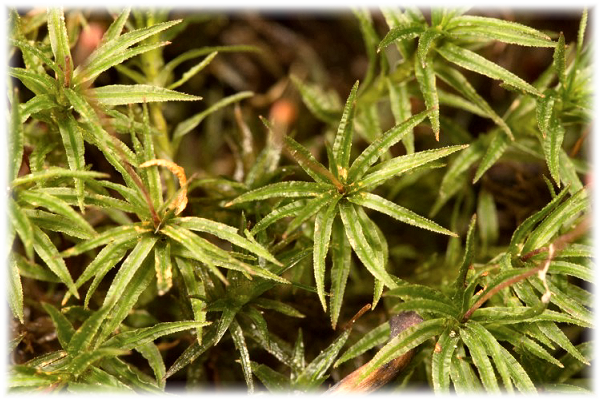
photograph courtesy of the Ohio Moss and Lichen Association
Atrichum undulatum var. altecristatum
wavy starburst moss
- What to look for:
- wavy leaves (ripples visible under hand lens)
- half way up leaf to tip, double teeth along leaf margin
- capsules form in fall and mature through winter
- forms large tufts
- Where to look:
- grows on soil, especially mounds, in forests along banks, trails, and roads
for additional photos and information, please visit:
Ohio Moss and Lichen Association
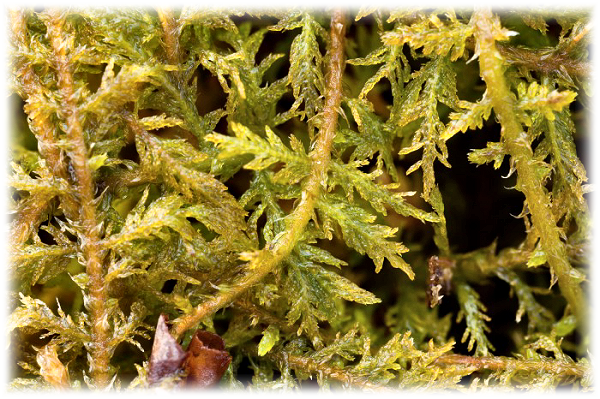
photograph courtesy of Bob Klips, Ohio Moss and Lichen Association
Thuidium delicatulum
common fern moss
- What to look for:
- green to yellowish-green moss
- fern-like branching (thrice-pinnate)
- forms deep cushions or mats
- Where to look:
- grows in moist shady places on soil, logs, stumps,and occasionally rocks
for additional photos and information, please visit:
Ohio Moss and Lichen Association
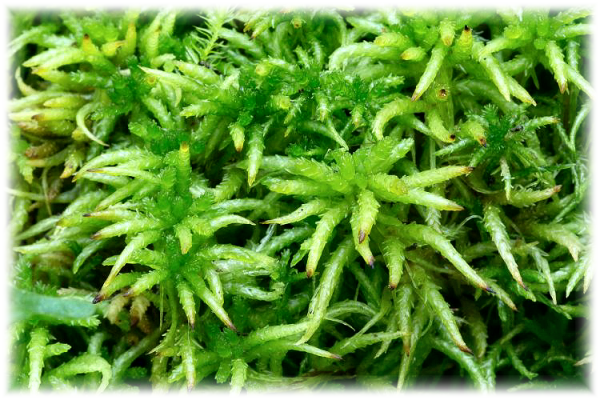
photograph courtesy of the Ohio Moss and Lichen Association
Sphagnum palustre
- What to look for:
- often light green to light brown
- good substrate for other plants
- red-tinged with sun exposure
- Where to look:
- wetlands, pools, and lake margins, wooded swamps, bogs and poor fens
for additional photos and information, please visit:
Ohio Moss and Lichen Association
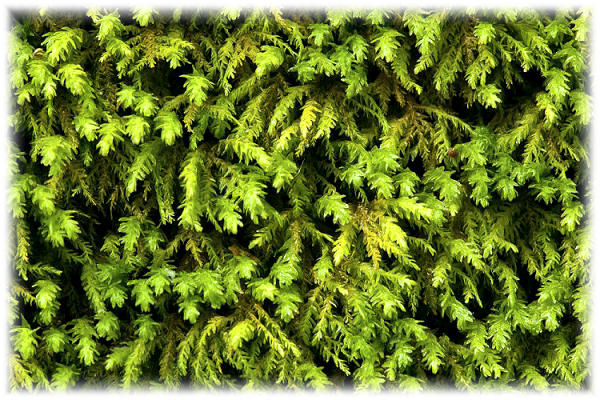
photograph courtesy of the Ohio Moss and Lichen Association
Anomodon attenuatus
apron moss or poodle moss
- What to look for:
- thick apron on tree bases up to 1 or 2 ft. in height
- Where to look:
- grows on trees, limestone rocks, or concrete bridge abutments
for additional photos and information, please visit:
Ohio Moss and Lichen Association
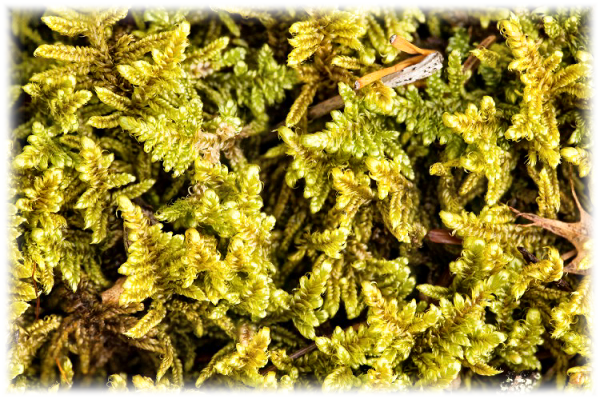
photograph courtesy of the Ohio Moss and Lichen Association
Hypnum imponens
brocade moss
- What to look for:
- shiny leaves strongly curved (sickle-shaped)
- forms dense mats
- Where to look:
- grows on logs and/or on thin soil over acidic rocks
for additional photos and information, please visit:
Ohio Moss and Lichen Association
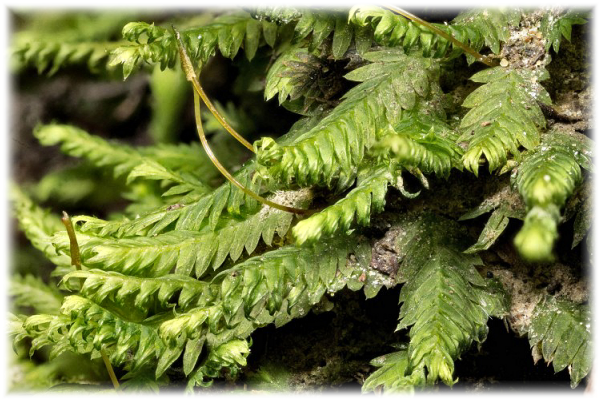
photograph courtesy of the Ohio Moss and Lichen Association
Fissidens taxifolius
yew-leaved fork moss
- What to look for:
- fairly small, dark green plants standing erect
- leaves arranged flat in two rows
- extra flap or pocket on lower part of leaves
- projecting tip at end of leaf
- Where to look:
- grows on bare soil in wooded areas (often on muddy soil of flood plains)
for additional photos and information, please visit:
Ohio Moss and Lichen Association
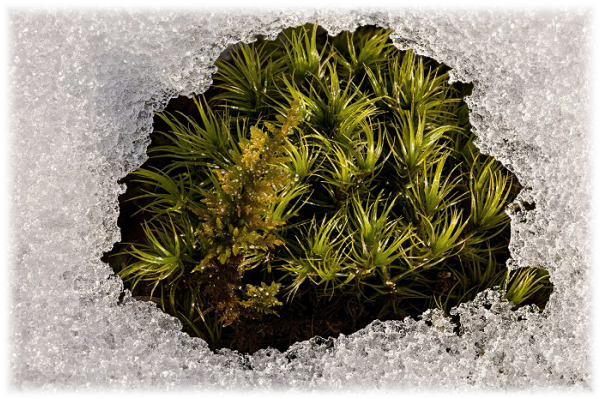
photograph courtesy of Bob Klips, Ohio Moss and Lichen Association
Dicranum scoparium
broom moss
- What to look for:
- glossy appearance
- curving, wiry leaves appearing to be swept to one side
- Where to look:
- grows on soil in open areas and clearings in forests
- often on bluffs above rivers or valleys
for additional photos and information, please visit:
Ohio Moss and Lichen Association
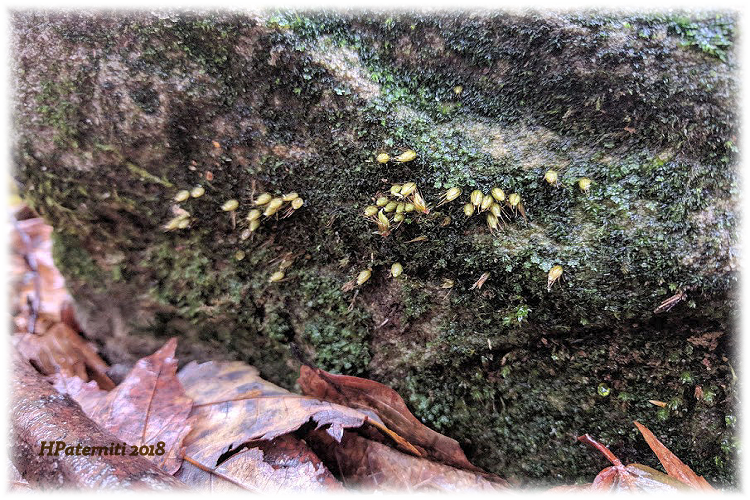
photograph and field footage courtesy of Heather Paterniti
Diphyscium foliosum
grain-of-wheat moss or nut moss
- What to look for:
- dull dark green to brownish leaves
- very short stemmed
- leaves surrounding capsules (perichaetial leaves) are longer and wiry in appearance
- forms tufts
- Where to look:
- grows on bare soil in forests, at base of tree roots, and occasionally on rocks
for additional photos and information, please visit:
Ohio Moss and Lichen Association
